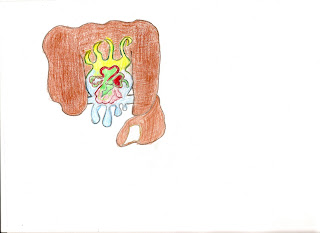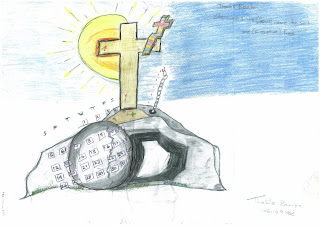RESEARCH
Deforestation is the conversion of forested areas to non-forest wasteland. Generally, the removal or destruction of significant areas of forest cover has resulted in a degraded environment with reduced biodiversity. In many countries, massive deforestation is ongoing and is shaping climate and geography. Deforestation results from removal of trees and other plants, without the process of re-planitng. As a result, habitats and animals are lost and soil erosion is found.
From about the mid-1800s, around 1852, the planet has experienced an unprecedented rate of change of destruction of forests worldwide. Forests in Europe are adversely affected by acid rain and very large areas of Siberia have been harvested since the collapse of the Soviet Union. In the last two decades, Afghanistan has lost over 70% of its forests throughout the country.[3] However, it is in the world's great tropical rainforests where the destruction is most pronounced at the current time and where clearcutting is having an adverse effect on biodiversity and contributing to the ongoing Holocene mass extinction.
About half of the mature tropical forests, that once covered the planet have fallen(almost 1 billion hectares!). The forest loss is already acute in Southeast Asia, the second of the world's great biodiversity hot spots. Much of what remains is in the Amazon basin, where the Amazon Rainforest covered more than 600 million hectares. The forests are being destroyed at a pace tracking the rapid pace of human population growth.In other words, the fastest growing thing next to humans is the destruction of forests!!
Unless significant measures are taken on a world-wide basis to preserve them, by 2030 there will only be ten percent remaining with another ten percent in a degraded condition. 80 percent will have been lost and with them the irreversible loss of hundreds of thousands of species.This could lead (and may already be leading) to the re-emersion of old diseases like small pox and high fevers.
Many tropical countries, including Indonesia, Thailand and Malaysia have lost large areas of their rainforest. 90% of the forests of the Philippine archipelago have been cut. In 1960, Central America still had 4/5 of its original forest; now it is left with only 2/5. Madagascar has lost 95% of its rainforests. Brazil has lost 90-95% of its Mata Atlantica forest.Half of the Brazilian state of Rondonia's 24.3 million hectares have been destroyed or severely degraded in recent years. As of 2007, less than 1% of Haiti's forests remain, causing many to call Haiti a Caribbean desert. Between 1990 and 2005, Nigeria lost a staggering 79% of its old-growth forests. Several countries, notably the Philippines, Thailand and India have declared their deforestation a national emergency.
Impact on the environment
Generally, the removal or destruction of significant areas of forest cover has resulted in a degraded environment with reduced biodiversity. In many countries, massive deforestation is ongoing and is shaping climate and geography.
Deforestation is a substantial contributor to global warming, and although 70% of the oxygen we breathe comes from the photosynthesis of plants, the mass destroying of the worlds rain forests is not beneficial to our environment. In addition, the incineration and burning of forest plants in order to clear land releases tonnes of CO2 which increases the impact of global warming.
Deforestation reduces the content of water in the soil and groundwater as well as atmospheric moisture. Deforestation reduces soil cohesion, so that erosion, flooding and landslides often ensue. Forests support considerable biodiversity, providing valuable habitat for wildlife; moreover, forests foster medicinal conservation and the recharge of aquifers (which, ironically has lead to the short supply of water for some regions). With forest biotopes being a major, irreplaceable source of new drugs (like taxol), deforestation can destroy genetic variations (such as crop resistance) irretrievably.
Shrinking forest cover lessens the landscape's capacity to intercept, retain and transport precipitation. Instead of trapping precipitation, which then percolates to groundwater systems, deforested areas become sources of surface water runoff, which moves much faster than subsurface flows (we also call it water erosion). That quicker transport of surface water can translate into flash flooding and more localized floods than would occur with the forest cover. Deforestation also contributes to decreased evapotranspiration, which lessens atmospheric moisture which in some cases affects precipitation levels down wind from the deforested area, as water is not recycled to downwind forests, but is lost in runoff and returns directly to the oceans. According to one preliminary study, in deforested north and northwest China, the average annual precipitation decreased by one third between the 1950s and the 1980s.
Longterm gains can be obtained by managing forest lands sustainable to maintain both forest cover and provide a biodegradable renewable resource. Forests are also important stores of organic carbon, and forests can extract carbon dioxide and pollutants from the air, thus contributing to biosphere stability. Deforestation (mainly in tropical areas) account for up to one-third of total anthropogenic carbon dioxide emissions. Forests are also valued for their aesthetic beauty and as a cultural resource and tourist attraction.
Reducing emissions from tropical deforestation and forest degradation (REDD) in developing countries has emerged as new potential to complement ongoing climate policies. The idea consists in providing financial compensations for the reduction of greenhouse gas (GHG) emissions from deforestation and forest degradation.
Economic impact
Historically utilization of forest products, including timber and fuel wood, have played a key role in human societies, comparable to the roles of water and cultivable land. Today, developed countries continue to utilize timber for building houses, and wood pulp for paper. In developing countries almost three billion people rely on wood for heating and cooking. The forest products industry is a large part of the economy in both developed and developing countries. Using forests for one's own satisfactiono r beneficial needs results in a short term enojoyment of the resource, but a long ternm fatality for the rest of the world. West Africa, Madagascar, Southeast Asia and many other regions have experienced lower revenue because of declining timber harvests. Illegal logging causes billions of dollars of losses to national economies annually.
A new study found that the emerging market for carbon credits: "Deforestation in tropical countries is often driven by the perverse economic reality that forests are worth more dead than alive. But a new study by an international consortium of researchers has found that the emerging market for carbon credits has the potential to radically alter that equation." The new procedures to get the massive amounts of wood are causing more harm to the economy and over powers the amount of money spent by people employed in logging. According to a study, "in most areas studied, the various ventures that prompted deforestation rarely generated more than US$5 for every ton of carbon they released and frequently returned far less than US $1." The price on the European market for an offset tied to a one-ton reduction in carbon is 23 euro (about $35).
Use of the term deforestation
It has been argued that the lack of specificity in use of the term deforestation distorts forestry issues. The term deforestation is used to refer to activities that use the forest, for example, fuel wood cutting, commercial logging, as well as activities that cause temporary removal of forest cover such as the slash and burn technique, a component of some shifting cultivation agricultural systems or clearcutting. It is also used to describe forest clearing for annual crops and forest loss from over-grazing. Some definitions of deforestation include activities such as establishment of industrial forest plantations that are considered afforestation by others. It has also been argued that the term deforestation is such an emotional term that is used "so ambiguously that it is virtually meaningless" unless it is specified what is meant. More specific terms terms include forest decline, forest fragmentation and forest degradation, loss of forest cover and land use conversion.

























 I have to pick one....rwaaaiiiit
I have to pick one....rwaaaiiiit



















